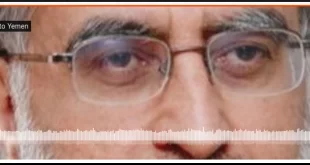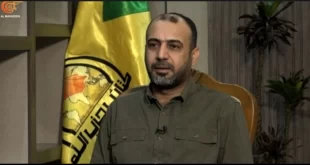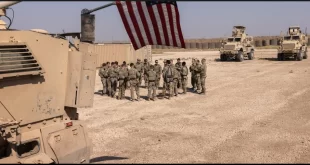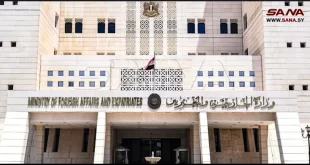July 8, 2017, Truthdig – Scott Ritter
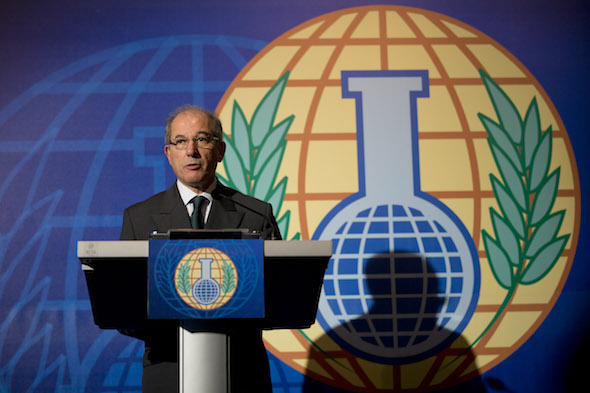
The Turkish government had set up a decontamination checkpoint in Hatay province, at the border crossing with Syria. Some 34 people claiming to be victims from Khan Sheikhun were processed at this checkpoint before being sent to hospitals in Antakya, Reyhanli and Iskenderun, all in Turkey. Three of these victims subsequently succumbed to their injuries. Of the remaining 31, 10 were identified by the FMM, working together with the White Helmets, as being of investigatory interest. On April 8, the FMM interviewed these survivors and witnessed blood and urine samples being taken. These samples, together with the biomedical samples extracted during the autopsies witnessed by the FFM, were dispatched to Rijswijk later that same day, arriving April 9.
The samples were subsequently divided and dispatched April 10 to two designated laboratories, one in the U.K. and one in France, certified to conduct forensic investigations of inspection samples collected by the OPCW. On April 11, the Turkish Health Ministry again preempted the OPCW by announcing that Turkish labs, in their analysis of the blood samples taken from survivors, confirmed that sarin nerve agent was used in the Khan Sheikhun attacks. The next day, April 12, U.K. Ambassador to the United Nations Matthew Rycroft announced that U.K. specialists had found “sarin or sarin-like” substance in victims’ blood samples. This announcement, when combined with the statement from Turkey the day before, preempted any announcement of the findings by the OPCW of the U.K. designated laboratory, which had reached its preliminary conclusion earlier that day, and significantly undermined any notion of independence on the part of the OPCW in the conduct of its investigation into the Khan Sheikhun incident. (On April 16 the French government released its own assessment of the samples, evaluated at the National Center for Scientific Research, which mirrored that of the British.)
Things only got trickier for the FFM team in Turkey. On April 12 and 13, the team received additional biological-environmental samples, in the form of two dead birds and the hair from a dead goat that the team was told were from the site of the attack; internal organs were taken from the dead birds by the team and forwarded to the OPCW laboratory. Additional environmental samples, in the form of soil and water samples, were turned over to the team by a representative of the White Helmets, who provided the team with photographs and video of the sampling to back up his claim. These samples were sent to Rijswijk on April 21 for processing and subsequent dispatch to designated laboratories for evaluation April 25.
On May 19, the OPCW released a preliminary report on the work of the FFM, including an annotation detailing the findings of the designated laboratories regarding the evaluation of the samples sent by the team. In almost every instance, the laboratory findings showed evidence of “sarin or a sarin-like substance.” Unlike the Sellstrom report on Ghouta in 2013, however, the findings of the FFM were not universally embraced, with Russia in particular questioning the provenance and veracity of the test results, and therefore the credibility of the OPCW itself.
One of the major issues confronting the OPCW in releasing the findings of the FFM is the fact that the inspected states party (ISP), in this case Syria, was removed from the entire process, in violation of the most basic fundamental requirements of the Chemical Weapons Convention (CWC), which holds that the ISP is an integral part of the veracity of any inspection; here, the Syrian government was not involved. The CWC specifically notes that the ISP has a right to retain portions of all samples taken; indeed, of the eight portions of each sample created, one is required to be turned over to the ISP, and one kept on site under joint OPCW/ISP seal. This was not done.
Moreover, sampling and analysis operations are the sole purview of trained OPCW inspectors, using “necessary equipment” exclusively drawn from OPCW stores for that purpose. This includes sample vials and bottles, scoops, syringes, wipes and other sampling materials. Each sample taken is supposed to be accompanied by an OPCW sampling and analysis booklet, maintained by the OPCW inspectors, which documents the handling of the sample from collection to final disposition—the very essence of “traceability” that governs the credibility of any findings derived from an assessment of the sample in question.
None of the samples received by the FFM in Turkey, and forwarded to the OPCW for subsequent evaluation in designated laboratories, meets the requirements set forth by the OPCW’s own operating procedures regarding S&A methodology. Even if the FFM accepted at face value the images and videos provided by the White Helmets ostensibly documenting the collection of these samples, the fact that the samples were collected April 4 and only turned over to the FFM on April 12 and 13 creates a week-plus time frame when the location and status of the samples cannot be meaningfully ascertained; the FFM had no way of determining if the samples shown being collected on the White Helmet-provided images and videos were the same material turned over to the FFM.
Moreover, the samples themselves fail to meet any quality control or quality assurance standard set by the OPCW regarding its S&A activities. A cursory examination of the White Helmet videos would show that the collection activity was more theater than real; the individuals conducting the sampling were wearing chemical protective suits suitable for training only (the green suits are clearly labeled “Training”), which means the suits provide no protection from chemical agents. Moreover, there is no scene control, with personnel in full protective ensembles freely mixing with persons having no protection at all. One individual carries a Draeger multi-gas meter, useless in the detection of chemical agents. Samples are thrown haphazardly into a carrying case, and the samples are collected using a single scoop, meaning that there is cross-contamination throughout the process. Cars and motorcycles drive freely through the sampling area, contributing to potential cross-contamination. In short, the videos meant to show the viability of the samples in fact negate their potential utility—these samples should never have been accepted by the FFM, let alone forwarded to the OPCW laboratory for subsequent evaluation at designated laboratories.
As a hazardous materials technician who has trained extensively to operate in a chemical weapons environment (including live agent training at Fort McClellan in Alabama, where I participated in sampling and detection exercises using actual sarin and VX nerve agent), I was appalled by the cavalier approach taken by the White Helmets in conducting their supposed sample collection of sarin-infused material. There was no effort to set up a hot zone (i.e., area of known or suspected contamination), no indication of any meaningful monitoring and detection activity, and no evidence of any effort to decontaminate personnel, equipment or samples.
 Syria Support Movement solidarity with the Syrian people
Syria Support Movement solidarity with the Syrian people

